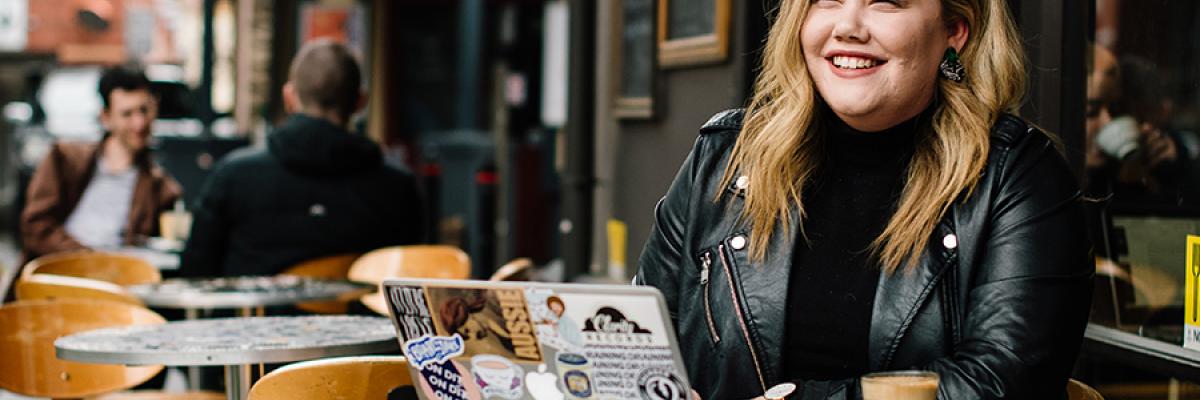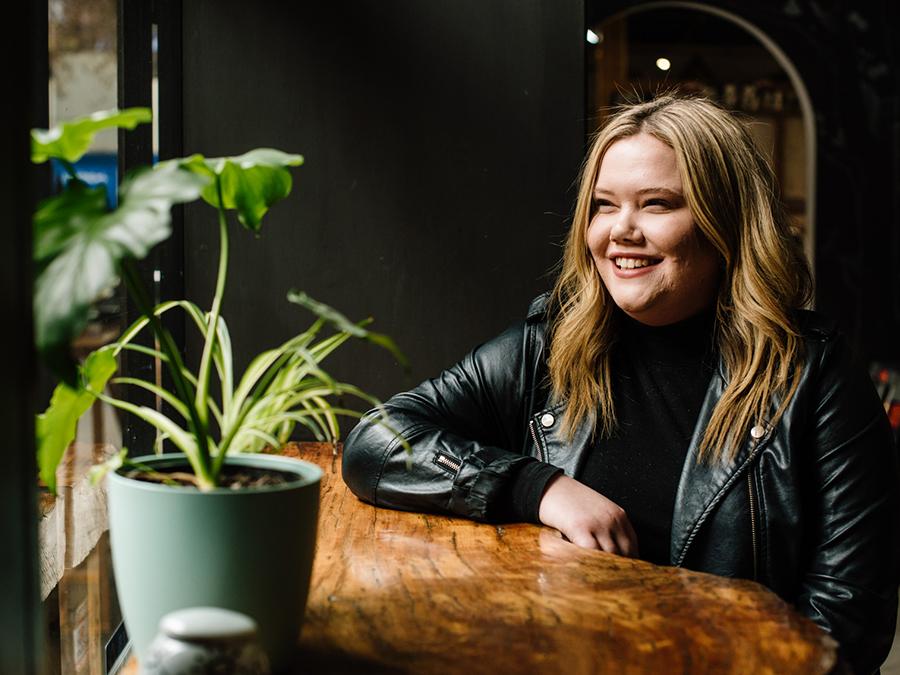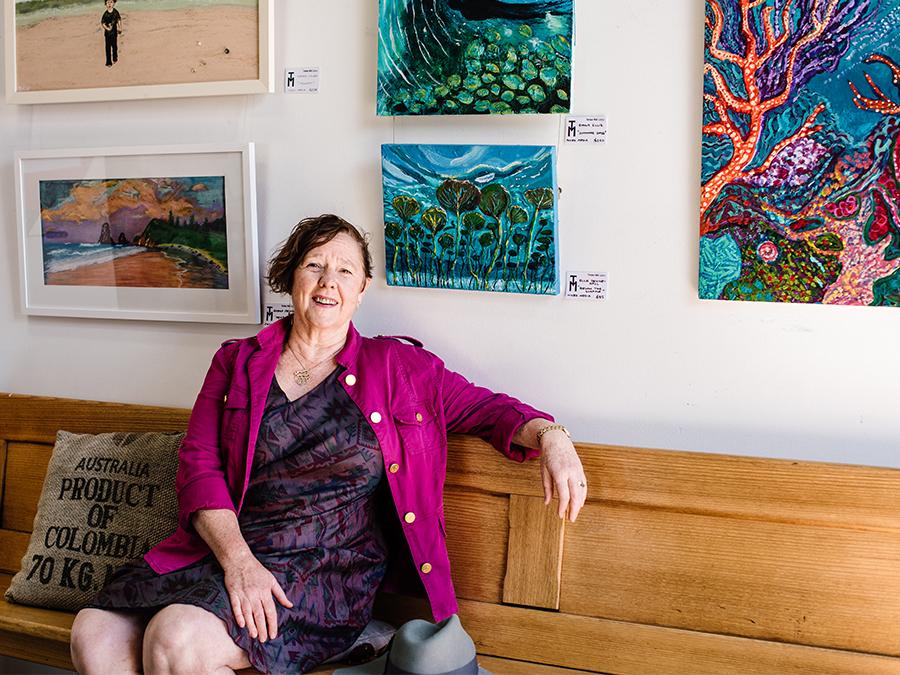On Dit: Then and Now
The student voice lives on strong and proud through Australia’s third oldest student publication On Dit.

Pronounced on-dee, On Dit roughly translates to ‘they say.' Since replacing its precursor, the Varsity Ragge, as a two-page broadsheet in 1932, On Dit has expanded to become the primary vehicle for the University of Adelaide’s student voice.
As the third-oldest student publication in Australia, the magazine boasts an impressive calibre of past editors and contributors, including Clementine Ford, Annabel Crabb and Julia Gillard.
Other alumni to etch their name in On Dit history are Nonee Walsh and Imogen Hindson. The former, a Bachelor of Arts alumna, and the latter, a passionate media and law student. We take a look at their time editing On Dit.
Imogen Hindson
Current Editor
Bachelor of Laws (2020), Bachelor of Media (2021)

I first became involved in On Dit in 2018 following the violent passing of Eurydice Dixon in Melbourne. I was frustrated by the long- spouted mentality that women are to blame for their abuse, and so I wrote A Monster Didn’t Kill Eurydice, Our Culture Did.
I thought it was important for young students – especially young women – to consider the reality that is gendered violence in our country, and was attracted to On Dit because I saw the value in reaching a predominantly student-based readership.
That story was the match that sparked a flame and I became more and more involved with On Dit. I continued to contribute and eventually guest edited the annual women’s edition, Elle Dit, later in the year. Now, I co-edit the magazine alongside Samantha Bedford, Emily Savage and Maxim Buckley.
I don’t think a typical week exists for us at On Dit home base as we’re always trying our best to bring something new to the table, but you can usually find us sitting in the Howling Owl café or in our basement office musing ideas over a cup of coffee or tea.
One of the things we’ve been focused on is recapturing the political and social discourse of On Dit’s legacy. During the 70s, there were major student-driven protests around gay rights, the Vietnam War and women’s rights, but sadly I think we’ve gradually lost that passion. We’re really trying to ensure students’ voices are heard, especially when we have such active voices advocating for student unionism and protesting the government’s ineffective stance on climate change.
"Editing the magazine has helped me realise that we as students have a way of thinking that is novel and fresh."Imogen Hindson
Students have historically been a very vocal body and it’s essential they have the place to express their opinions about what is happening within their University, as well as to vocalise their thoughts, feelings and concerns surrounding state, national and global affairs.
This expression is all part of the student experience and is fundamental in creating a group of educated people searching for change as they enter the workforce.
Editing the magazine has helped me realise that we as students have a way of thinking that is novel and fresh.
As content editor, I really enjoy the creative control the team and I have, and the ability to showcase some really interesting work. I’m always learning, researching and fact-checking while reading a varied collation of perspectives. I really enjoy learning from students in the process.
As my time as editor draws to a close, I’m most proud of our fifth edition because it showcases a lot of my passions including politics, abortion reform, greenwashing and whistleblowers, in one magazine.
Nonee Walsh
Previous Editor
Bachelor of Arts (1979)

Having been a journalist for 40 years, I can't start writing unless I have a lead. As I was musing about writing about 1979 at the University of Adelaide, I was doing some cleaning, and it fell out of the shelf - a little blue and black magazine. The cover was a formally dressed young woman wearing a hat where 'The Australian Women’s Meekly' was printed. She was wearing a badge saying 'I’M A HUMOURLESS FEMINIST', and slashed across the corner, 'This is really On Dit'. That magazine (vol 47, no 21) typified my approach to editing the student paper – I wanted more than feminists and activists to read the annual women’s edition – in fact all editions.
So along with the campus women’s group and volunteers, we did a spoof of TheWomen’s Weekly, as it was then, with both funny and serious articles about women’s issues and perspectives, complete with a back cover of collected graffiti from the University of Adelaide’s women’s toilets. I was so pleased to see men reading it in the UniBar and to have the argument with one medical student who came into the office at the bottom end of The Cloisters to tell me it was irresponsible to put women off using IUDs by humorously overstating the dangers. [I note that some of those contraceptive devices were withdrawn years later because of their side-effects.]

On Dit was hard work, including late nights writing at home and on weekends (checked on by the kind University security guards) as I was a sole editor. I mostly worked 9-5, constrained by the hours for my daughter at the new University childcare centre.
I had a great team of friends in the Students' Association and other volunteers who laid out the editions by cutting and pasting – with real paper and scissors. Then they created bromides in the darkroom near the Students' Association office, at the opposite end of The Cloisters, ready to send to the Murray Bridge printer.
Life revolved around The Cloisters, the Union Building and the Barr-Smith Lawns. It was a heady year of discussions and writing on contraception and abortion, human rights across the world, and of course education policy. Twice we were in Melbourne for the AUS National Council to stave off moves, led by then-students Tony Abbott and Peter Costello, to close down the union.
The late 70s and early 80s were a time of reform. Protests a decade before led to new laws, and student politicians argued about legislation and implementation. It was a time when a few media outlets were just starting to report issues which had long been the province of student newspapers. That alternative role is one that a student newspaper should continue to fill.
I guess I always wanted to be in journalism, and the University of Adelaide got me there, perhaps inadvertently. I left well prepared to work in media with a BA in anthropology and an incomplete honours thesis which became a series on student radio. The rest is history.
Story by Imogen Hindson, Nonee Wash and Michaela McGrath
Photos by Meaghan Coles
